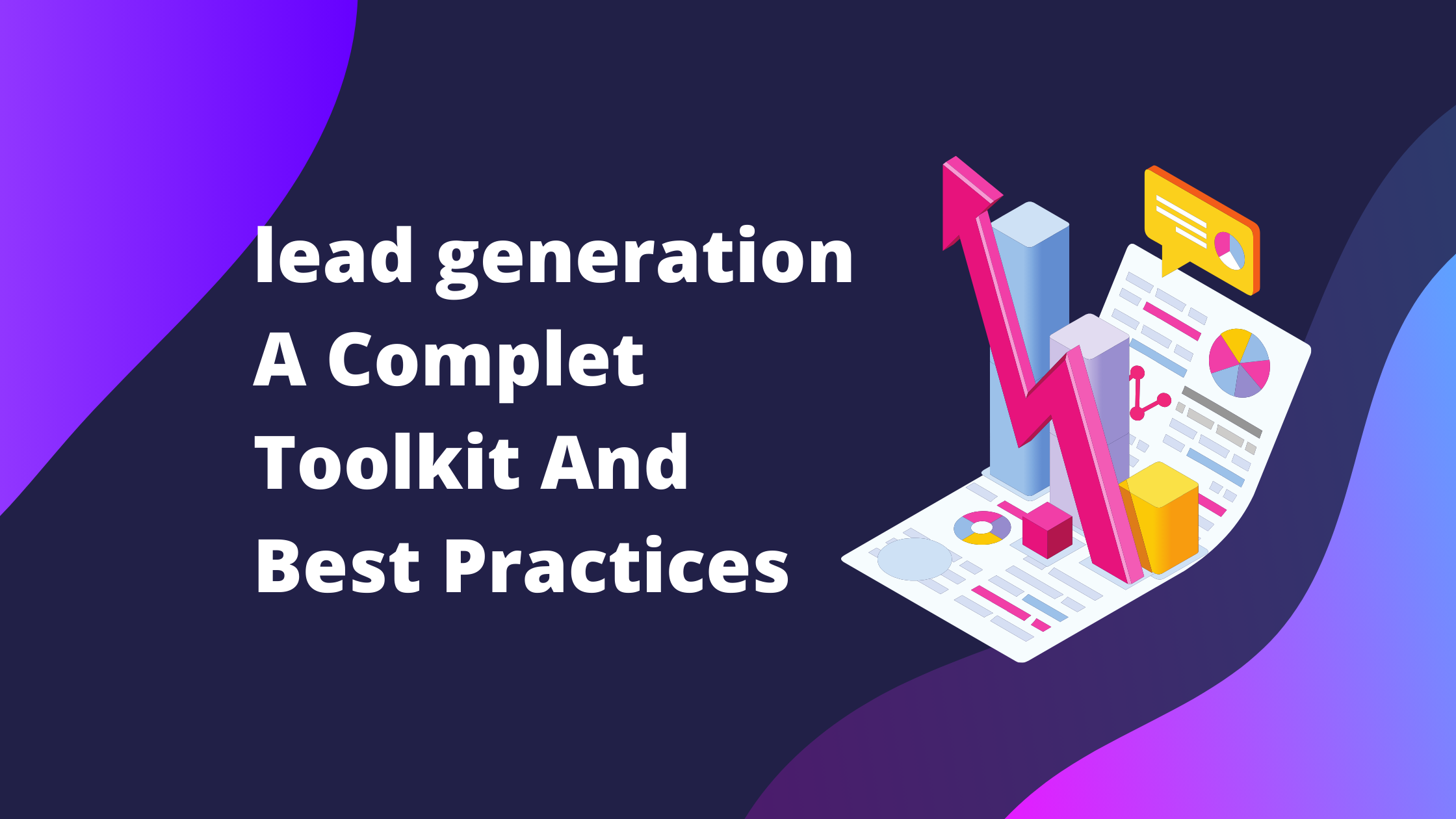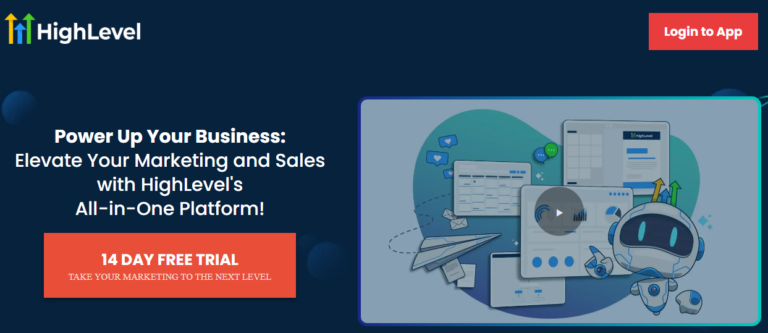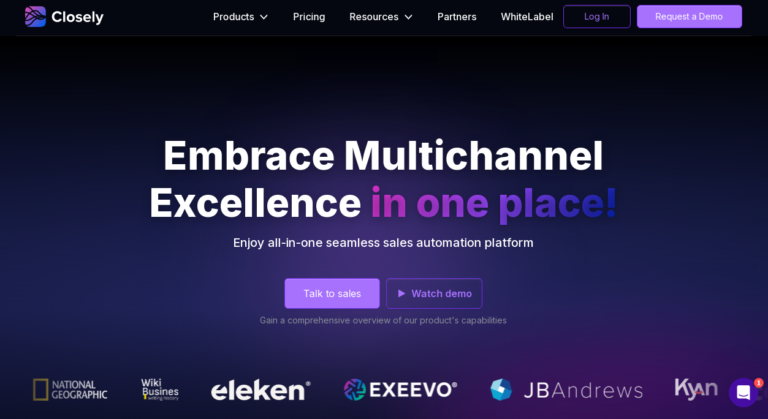lead generation A Complet Toolkit And Best Practices
Businesses that fail to generate leads effectively are at risk of stagnation.
Lead generation is the lifeblood of business growth—it drives potential customers to discover,
engage with, and ultimately purchase from your brand.
Whether you’re a seasoned marketer or a budding entrepreneur,
mastering the art and science of lead generation
is vital for success in the modern market.
Understanding Lead Generation: The Foundation of Business Growth

Lead generation is a crucial driver for business success.
It is identifying, attracting,
And nurturing potential customers (or leads) interested in a product or service.
Before delving into the tools and tactics for generating leads,
it’s essential to understand why lead generation is crucial to business growth.
What Is Lead Generation?
At its core, lead generation initiates consumer interest or inquiry into products or services.
It involves various marketing tactics that attract potential customers
and encourage them to provide their contact information,
usually in exchange for something valuable—whether it be information,
a free trial, or a demo.
The leads you generate could be cold,
meaning they are unfamiliar with your brand or warm,
meaning they’ve already interacted with your company
and are closer to purchasing.
Both types of leads are valuable,
but they require different approaches for nurturing and conversion.
The Role of Lead Generation in Business Growth
Lead generation is not a one-time activity.
It’s an ongoing process that fuels the sales funnel.
Businesses need a steady influx of new leads to maintain growth
and counteract the natural churn when customers leave or go inactive.
Lead generation helps businesses:
Attract New Customers: Without leads, your business cannot grow.
By consistently generating leads,
you ensure a continuous flow
of potential customers entering your sales funnel.
Increase Revenue: More leads translate to more opportunities to make sales.
Even if not every lead converts, the more you have,
the more chances you get to close deals.
Build Brand Awareness: Lead generation tactics such as content marketing
and social media engagement also help build brand awareness,
making your business recognizable in the marketplace.
Establish Relationships: Lead generation allows businesses to create connections
with potential customers early on in their journey.
This makes it easier to nurture relationships
and convert leads into loyal customers.
The Buyer’s Journey and Lead Generation
To effectively generate leads,
you need to understand the buyer’s journey,
which consists of three main stages:
Awareness Stage: The potential customer becomes aware of a problem or need.
At this stage, your goal is to attract attention
and generate interest through content, advertising, or other means.
Consideration Stage: The lead starts researching and evaluating solutions to their problem.
This is where you nurture the lead by providing valuable information
and positioning your product or service as the ideal solution.
Decision Stage: The lead is ready to make a purchasing decision.
Here, you focus on converting the lead into a customer
by offering personalized recommendations, discounts, or incentives.
Common Challenges in Lead Generation
Generating leads is not without its challenges.
Some common obstacles include:
Finding Quality Leads: Not all leads are created equal.
Finding leads that are a good fit for your business can be challenging,
especially if you don’t clearly understand your target audience.
Lead Nurturing: Even after you generate leads,
they often need nurturing to convert.
This requires ongoing engagement and communication.
Competition: The digital landscape is crowded.
Standing out among competitors requires innovative tactics
and a clear value proposition.
Lead generation is the cornerstone of business growth.
By understanding its importance,
businesses can create a solid foundation for success.
As we progress through this book,
you’ll discover the tools and strategies needed to build
an effective lead-generation system tailored to your business needs.
The Essential Tools for Effective Lead Generation
Lead generation is a complex process that involves multiple touchpoints, channels, and strategies.
To manage this effectively,
businesses need a robust toolkit that simplifies,
automates, and enhances their lead-generation efforts.
This chapter will explore the most essential tools you need to optimize your lead generation process.
Whether you’re looking to capture, nurture, or convert leads,
these tools are the foundation of an effective lead generation system.
Customer Relationship Management (CRM) Systems
One of the most crucial tools for lead generation
is a Customer Relationship Management (CRM) system.
A CRM system is software that helps businesses manage interactions with current and potential customers.
It is a centralized hub where you can store information about your leads,
track their behaviour,
and manage communication throughout the buyer’s journey.
Why is a CRM Important for Lead Generation?
A CRM is essential because it allows you to:
Track Lead Behavior: With a CRM, you can monitor how leads interact with your business.
For example, you can see which emails they’ve opened,
which pages they’ve visited on your website,
and how they’ve responded to your campaigns.
Segment Leads: Not all leads are the same.
A CRM allows you to segment leads based on criteria such as demographics,
behaviour, or level of interest.
This helps you tailor your marketing efforts to specific groups
and increases your chances of converting leads into customers.
Automate Follow-Ups: Following up with leads is critical to keeping them engaged.
A CRM system can automate this process
by sending personalized emails or notifications based on lead activity.
Top CRM Tools for Lead Generation
Some of the most popular CRM tools for lead generation include:
HubSpot CRM: A widely-used platform with a range of free features
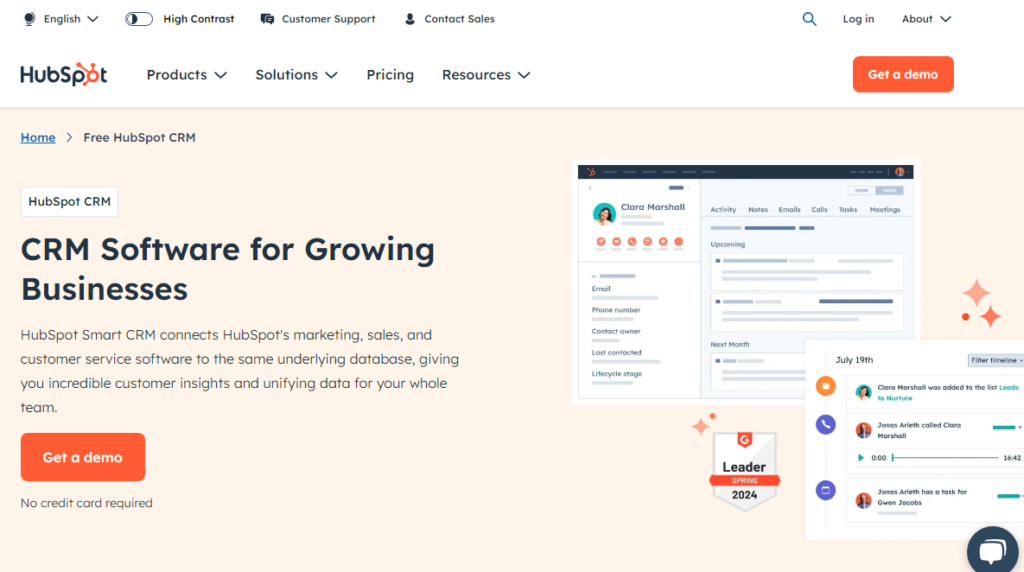
that allow you to manage leads,
track email opens, and automate follow-ups.
Salesforce: Known for its scalability and customization,
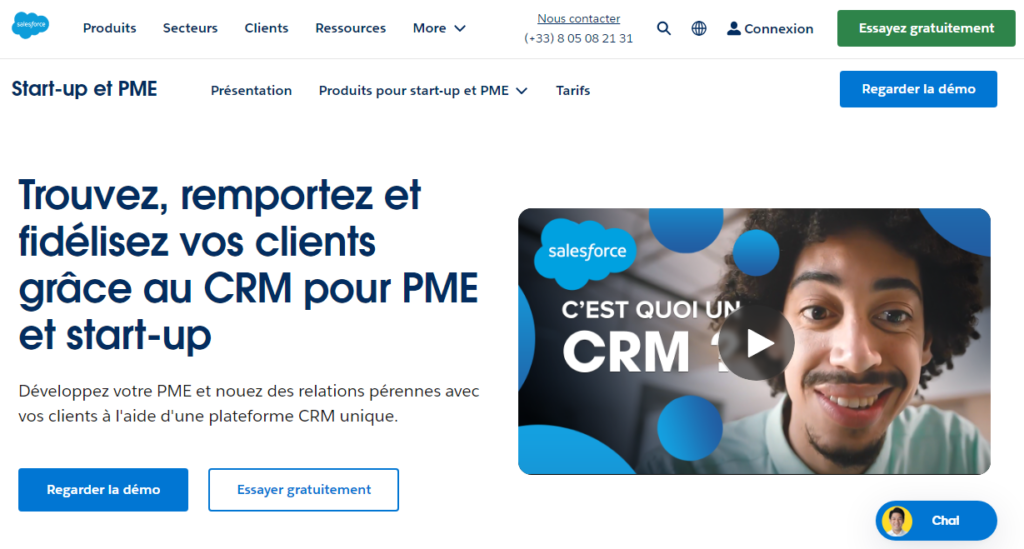
Salesforce is ideal for businesses of all sizes
looking to streamline their lead-generation efforts.
Zoho CRM: This platform offers a range of features, including sales automation,
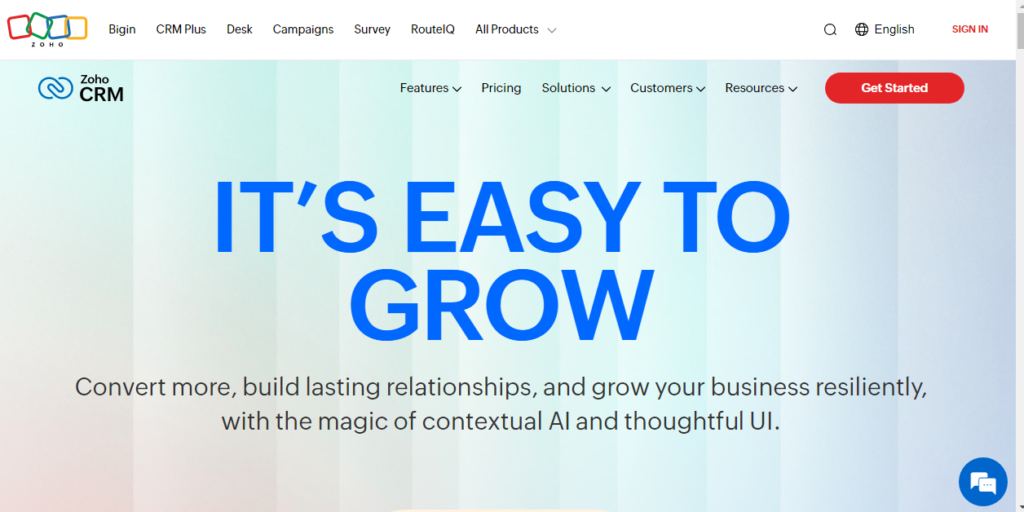
lead scoring, and email marketing integration.
Email Marketing Platforms
Email marketing remains one of the most effective channels for generating and nurturing leads.
Email marketing platforms help you send targeted emails
to your leads and track how they engage with your messages.
The key to successful email marketing lies in personalization
and timing—both of which can be optimized with the right tools.
Why is Email Marketing Crucial for Lead Generation?
Personalization: With email marketing platforms,
you can create personalized email campaigns tailored to each lead’s interests and behaviour.
Automation: Email marketing tools allow you to automate workflows.
For example,
you can set up a sequence of emails over time to nurture leads.
Tracking Performance: You can monitor open rates,
click-through rates, and conversions,
helping you understand what’s working and what needs improvement.
Top Email Marketing Tools for Lead Generation
Mailchimp: Known for its ease of use,
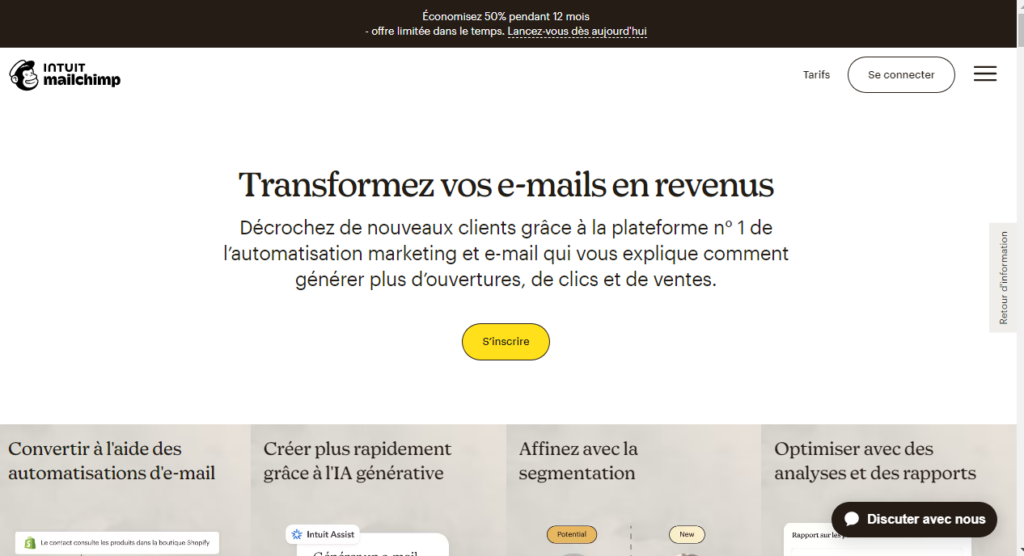
Mailchimp offers powerful features like automation,
segmentation, and detailed analytics.
ActiveCampaign: This platform excels in automation,
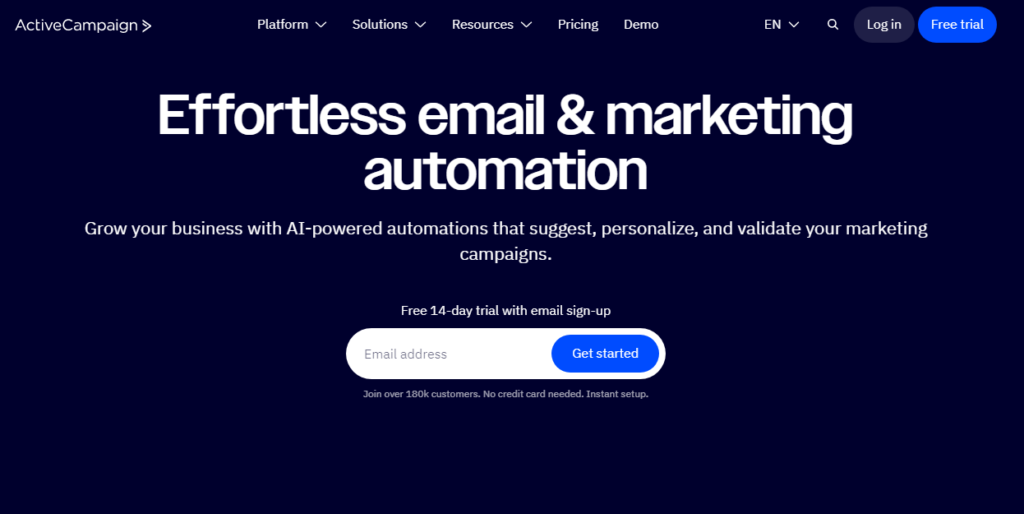
allowing you to set up sophisticated workflows based on lead behaviour.
ConvertKit: Popular among bloggers and content creators,
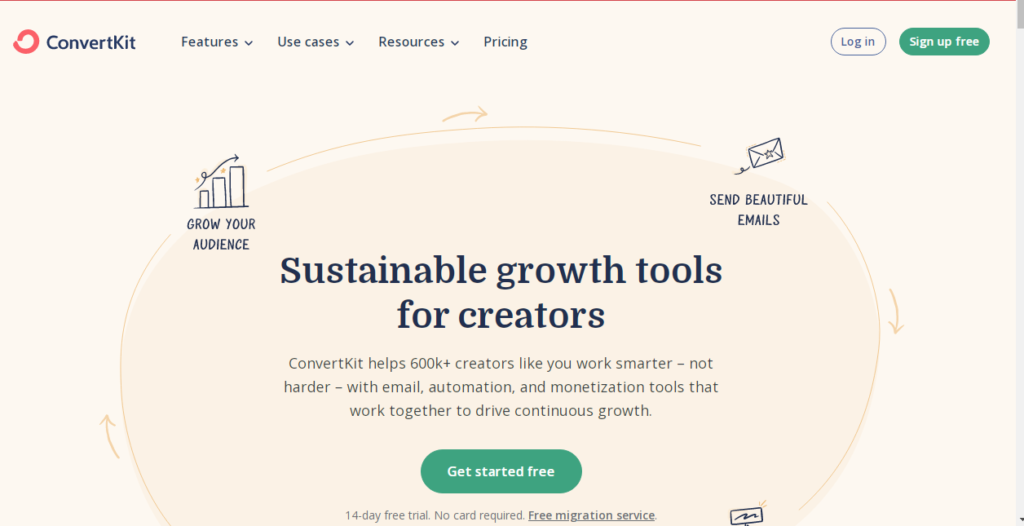
ConvertKit is known for its intuitive interface and advanced email automation features.
[convertkit form=6831055]
Landing Page Builders
Landing pages are standalone web pages designed specifically for capturing leads.
They are often used as the destination for paid advertising campaigns,
social media promotions, or email marketing.
A well-optimized landing page can dramatically increase your conversion rates
by focusing the visitor’s attention on a specific offer or call to action.
Why are Landing Pages Essential for Lead Generation?
Focused Messaging: Unlike a typical website page,
a landing page has a single purpose—converting visitors into leads.
This focused messaging leads to higher conversion rates.
Lead Capture Forms: Landing pages typically feature lead capture forms,
where visitors can provide their contact information
in exchange for something valuable,
such as a free ebook, webinar access, or discount.
A/B Testing: Many landing page builders allow you to run A/B tests to experiment
with different designs and content to see what converts best.
Top Landing Page Tools for Lead Generation
Unbounce: A drag-and-drop builder that allows you to create high-converting landing pages quickly.
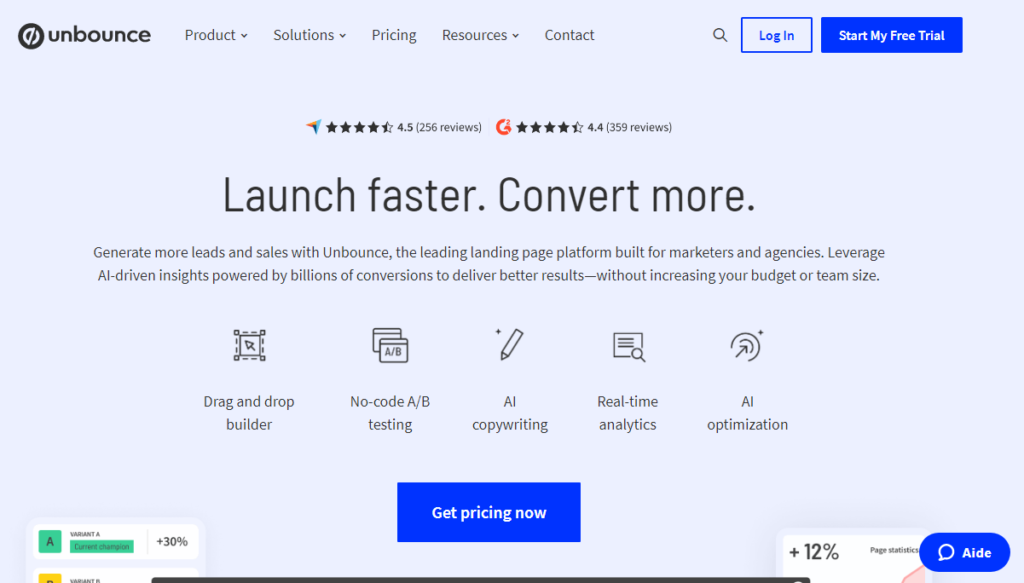
It also offers A/B testing and integrations
with CRM and email marketing tools.
Leadpages: Known for its wide range of templates and ease of use,
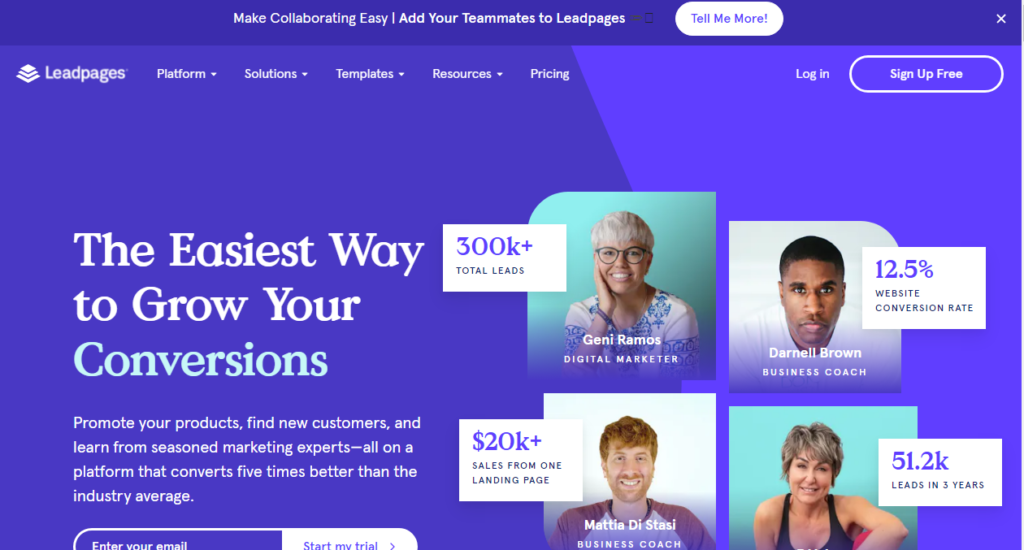
Leadpages make it simple to create landing pages that convert.
Instapage: Instapage offers advanced customization options
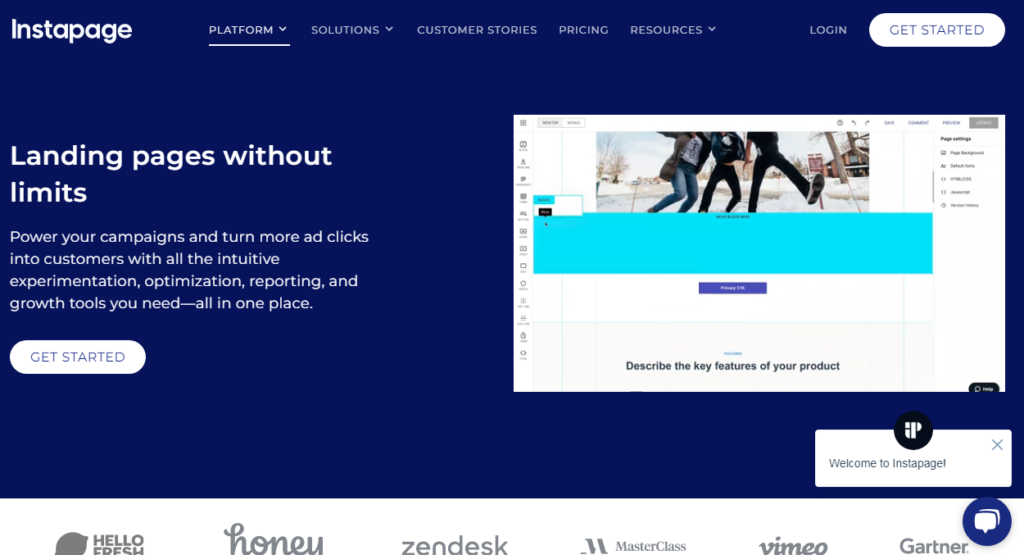
and A/B testing to help you optimize your landing pages for better performance.
Social Media Management Tools
Social media platforms are powerful channels for lead generation,
especially for businesses that rely on building relationships and engagement with their audience.
However,
managing multiple social media platforms can be time-consuming and overwhelming without the right tools.
Why Social Media Tools Matter for Lead Generation
Efficient Posting: Social media management tools allow you
to schedule posts in advance,
ensuring a consistent presence across all platforms.
Monitoring Engagement: These tools let you track how your audience
is engaging with your content,
helping you identify leads who are interested in your products or services.
Targeted Advertising: Social media management platforms often integrate
with advertising platforms like Facebook Ads,
enabling you to create targeted campaigns designed to generate leads.
Top Social Media Tools for Lead Generation
Hootsuite: A popular platform that allows you
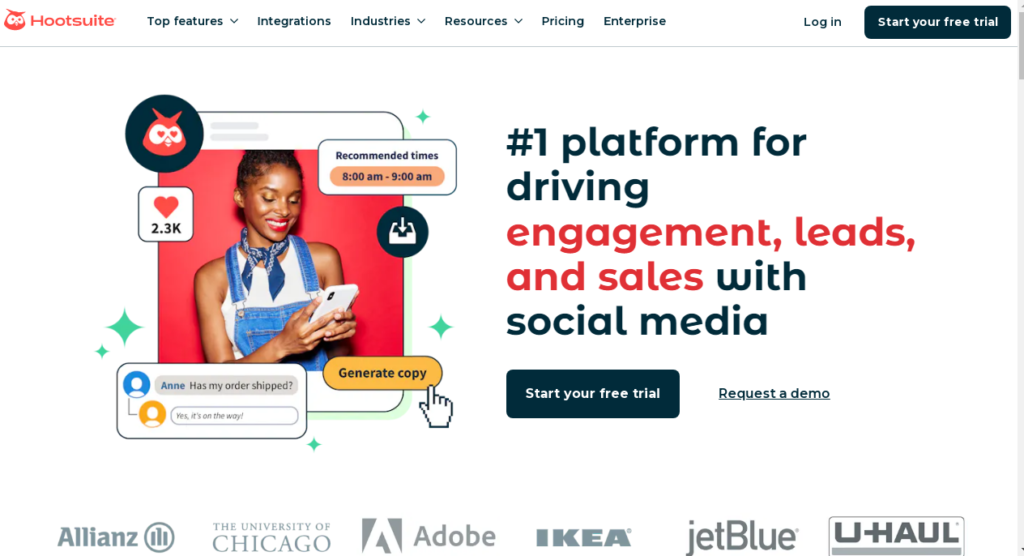
to manage multiple social media accounts,
schedule posts, and monitor engagement.
Buffer: Known for its simplicity,
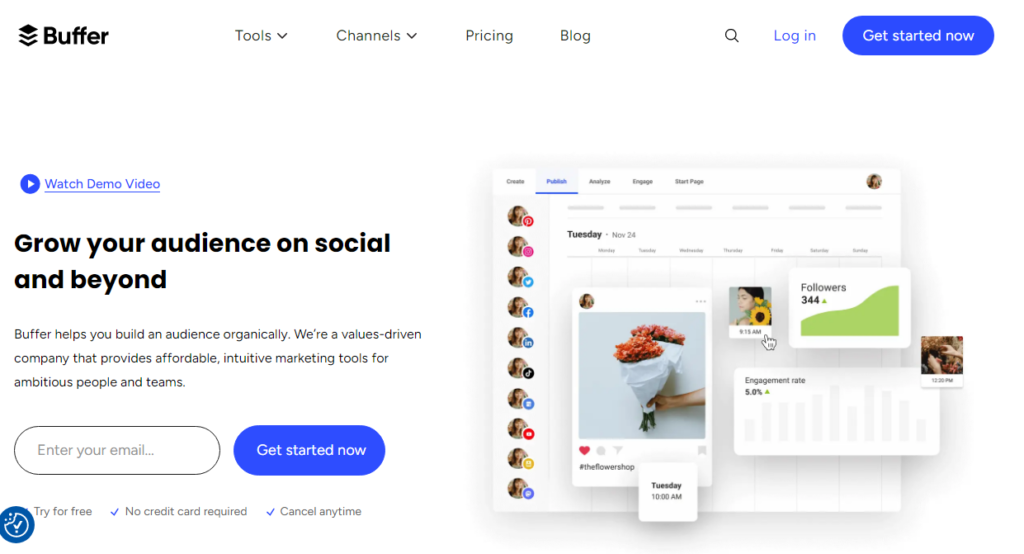
Buffer makes it easy to schedule social media posts and track their performance.
Sprout Social: In addition to scheduling and monitoring,
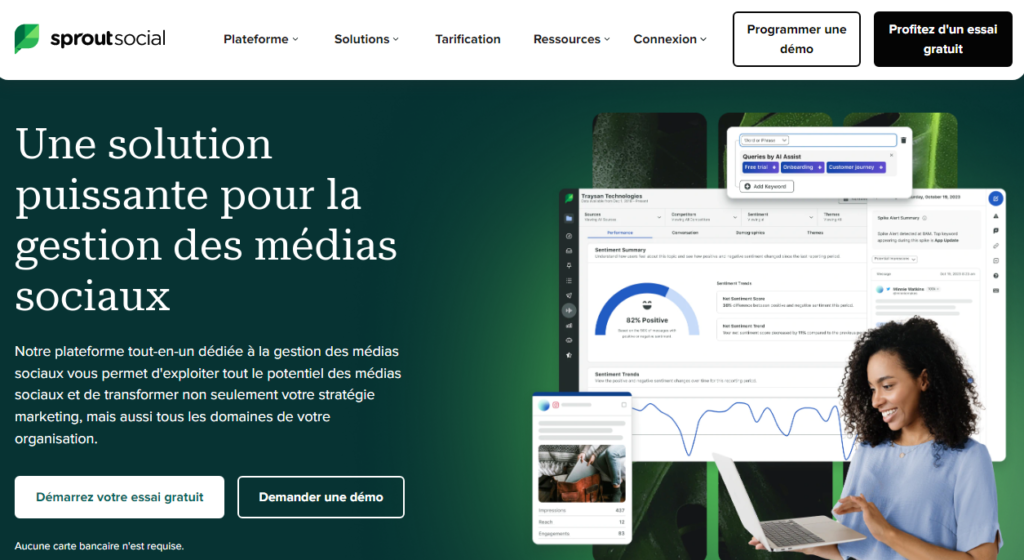
Sprout Social offers in-depth analytics
and social listening features that help you understand your audience better.
Lead Generation Forms and Chatbots
Lead generation forms and chatbots are practical tools
for capturing leads directly from your website or social media platforms.
These tools allow you to collect contact information
and qualify leads automatically.
Why Forms and Chatbots Are Important for Lead Generation
Lead Qualification: Forms and chatbots can ask qualifying questions
to determine whether a lead is a good fit for your business.
Instant Engagement: Chatbots provide instant responses to inquiries,
helping you capture leads even outside of business hours.
Seamless Integration: Many lead generation forms and chatbots integrate with CRM systems,
allowing you to store and manage leads efficiently.
Top Tools for Forms and Chatbots
Typeform: A user-friendly platform that allows you
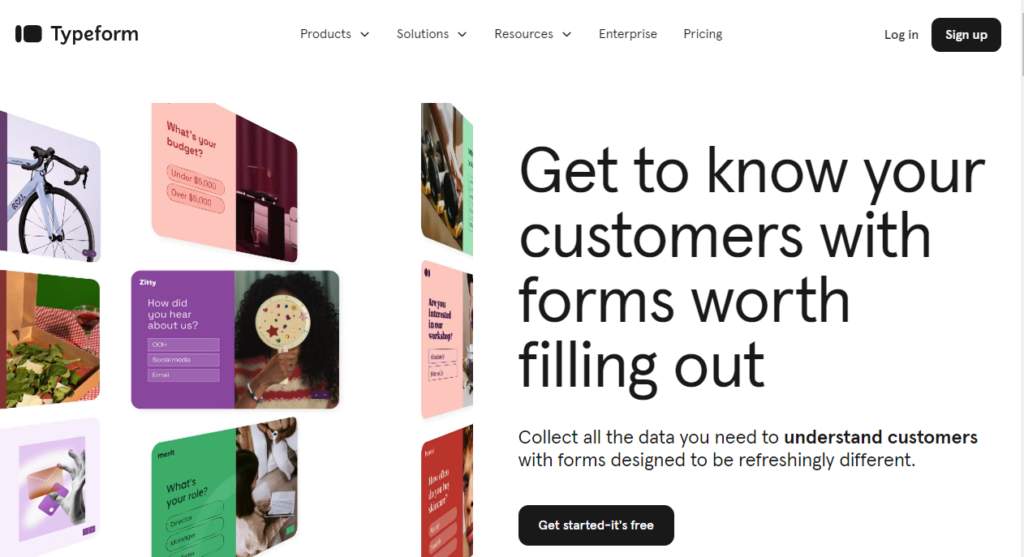
to create interactive lead-generation forms with a conversational interface.
Intercom: Known for its chatbot functionality,
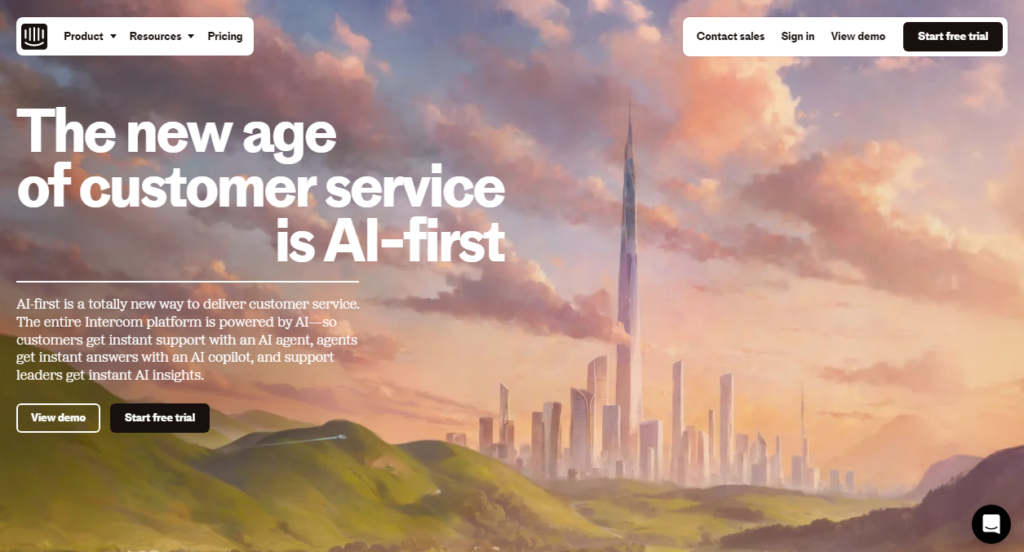
Intercom helps businesses capture leads through live chat and automated messaging.
Drift: Another popular chatbot platform that offers live chat,
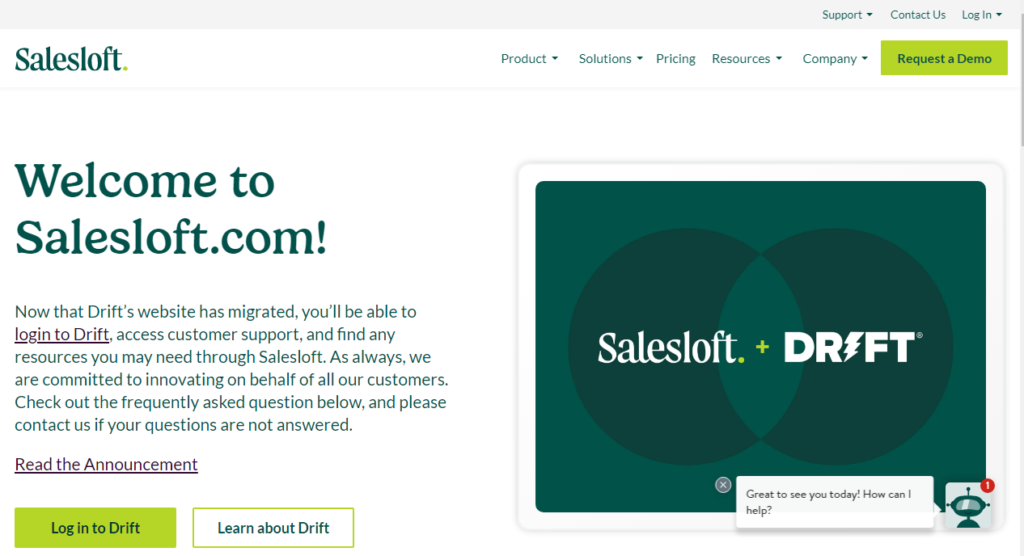
lead qualification, and integration with CRM systems.
Analytics and Reporting Tools
To ensure the success of your lead generation campaigns,
you need to track and measure performance.
Analytics tools provide insights into how your campaigns are performing,
allowing you to make data-driven decisions and optimize your efforts.
Why Analytics Are Essential for Lead Generation
Track Key Metrics: Analytics tools help you monitor important metrics such as website traffic,
lead conversions and campaign performance.
Optimize Campaigns: By analyzing data,
you can identify areas of improvement in your lead generation campaigns and adjust strategies accordingly.
Top Analytics Tools for Lead Generation
Google Analytics: The go-to tool for tracking website performance,
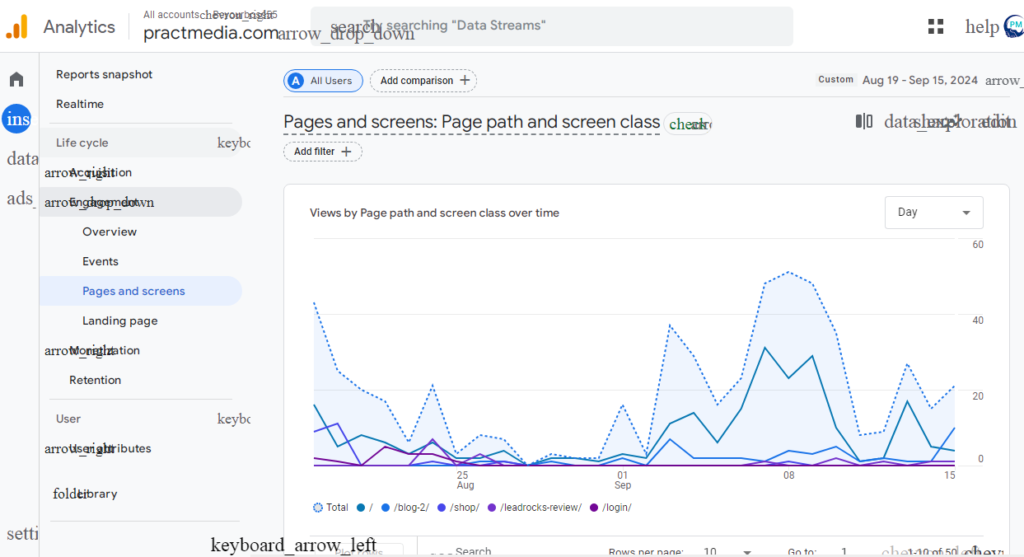
including traffic sources, user behaviour, and conversions.
Hotjar: A tool that provides heatmaps and session recordings
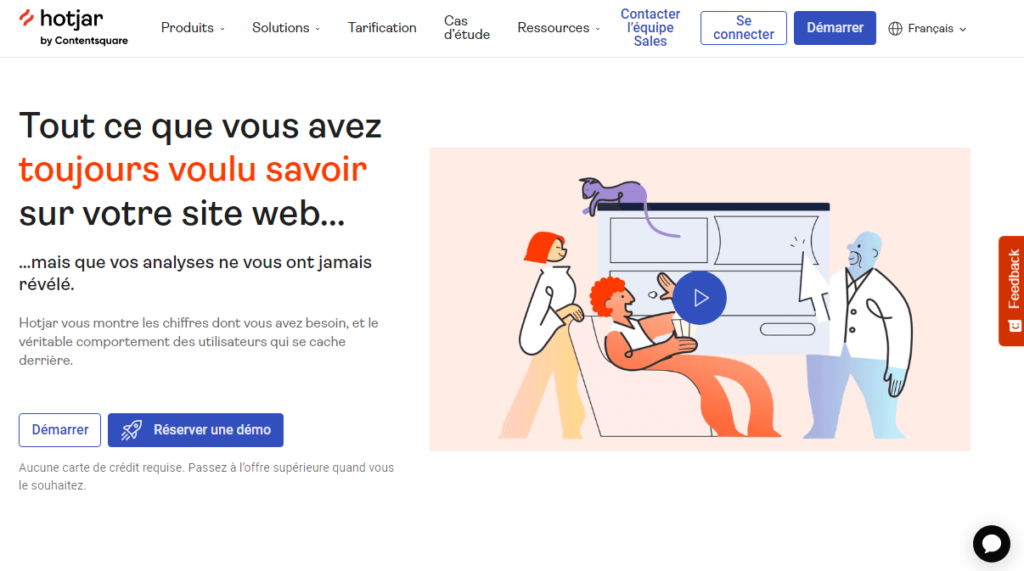
to help you understand how visitors interact with your website.
Kissmetrics: Kissmetrics focuses on tracking customer behaviour
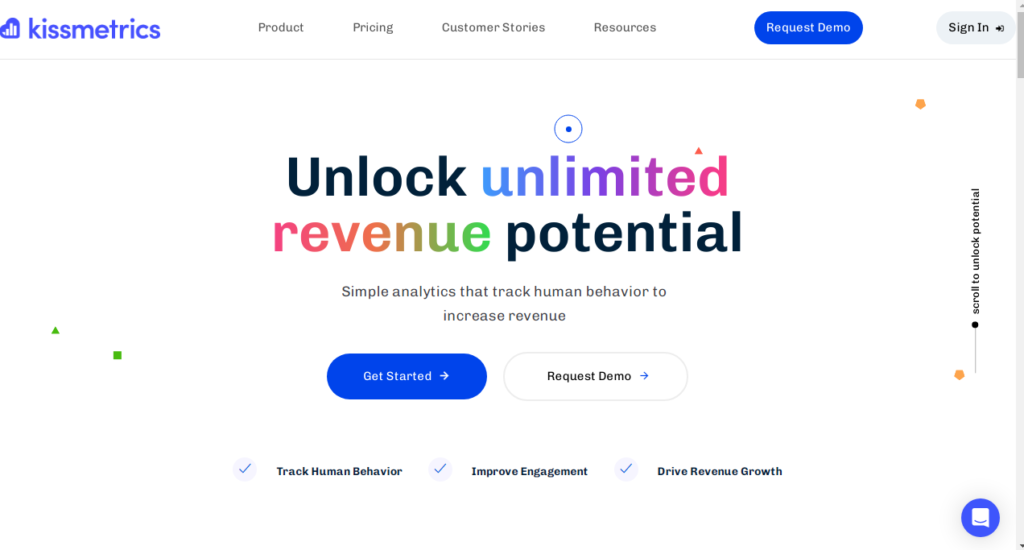
and providing insights into how leads move through the funnel.
The right tools can make or break your lead generation efforts.
By using a combination of CRM systems, email marketing platforms,
landing page builders, social media management tools,
and analytics, you can create a streamlined and efficient process for attracting,
nurturing, and converting leads.
As we move forward in this book,
we’ll dive deeper into specific strategies
that leverage these tools for maximum impact.
[convertkit form=7073012]
Crafting Irresistible Lead Magnets
Lead magnets are potent tools in the lead generation process.
They are valuable resources or incentives offered
to potential customers in exchange for their contact information.
The key to a successful lead magnet is offering something so irresistible
that your target audience is willing to provide their details,
which can then be nurtured into a lead.
In this chapter, we’ll explore the essential elements of a compelling lead magnet,
various types of lead magnets,
and how to craft ones that resonate with your audience.
What is a Lead Magnet?
A lead magnet is an offer designed to capture contact information from potential leads,
usually in the form of a name,
email address, or phone number.
This exchange must feel valuable to the user—something they can’t easily
get elsewhere or something that fulfils an immediate need.
Lead magnets can take many forms,
including ebooks, checklists, templates, guides, webinars, etc.
The goal is to offer content that addresses a specific problem
or provides an actionable solution,
encouraging the prospect to engage with your brand further.
Why Lead Magnets Matter
Lead magnets play a critical role in the early stages of the buyer’s journey,
particularly during the Awareness and Consideration phases.
They help build trust by offering value upfront,
positioning your brand as an authority in the field,
and guiding prospects toward becoming paying customers.
Without a strong lead magnet,
businesses miss opportunities to capture qualified leads
who might otherwise leave without taking action.
Here are a few reasons why
lead magnets are essential for any lead generation strategy:
Lead Capture: They are the initial engagement point,
allowing you to capture a lead’s contact information.
Segmentation: Depending on the type of lead magnet,
you can segment your audience based on their preferences and needs.
For example, if someone downloads an ebook on SEO,
you know they are interested in SEO-related services.
Trust Building: By offering value upfront,
lead magnets help build credibility and trust with your audience,
making them more likely to engage with your brand over time.
Nurture Leads: Once you have a lead’s contact information,
you can nurture them with personalized content,
increasing the likelihood of conversion.
Critical Elements of an Effective Lead Magnet
To craft an effective lead magnet,
it’s essential to focus on certain key elements that make
The offer is irresistible to your target audience. These include:
1. Solving a Specific Problem
Your lead magnet should address your audience’s specific pain point or challenge.
The more targeted and niche the solution,
the more your audience will likely find it valuable.
For example, instead of offering a general ebook on
“Marketing,” create one on “How to Generate Leads with Facebook Ads in 2024.”
2. High Perceived Value

Your lead magnet should offer something that feels valuable to the user,
whether it’s actionable insights, templates, or tools.
The content should be well-researched,
professionally presented, and genuinely helpful.
If the lead magnet appears low-quality or generic, it will fail to capture attention.
3. Quick Wins
Lead magnets that deliver quick,
tangible benefits tend to perform best.
For example, offering a checklist or template that solves a problem
within minutes will be more attractive than a lengthy guide
that requires a significant time investment.
4. Easy to Consume
Your lead magnet should be easy to digest.
Whether it’s a short video tutorial, a one-page cheat sheet,
or a 5-minute quiz, the quicker your audience can absorb the information and see results, the better.
People are often busy and may be discouraged by lengthy or overly complex content.
5. Immediate Gratification
Deliver the lead magnet immediately upon submission of contact information.
Instant access satisfies the need for instant gratification,
and the faster your audience sees value,
the more likely they are to stay engaged with your brand.
Types of Lead Magnets
There are many different types of lead magnets,
each with its advantages.
Here’s a breakdown of some of the most popular and effective options:
1. Ebooks and Guides
Ebooks are a classic and widely used type of lead magnet.
They provide in-depth information on a specific topic
and are a great way to position your brand as an authority.
For example, if you’re a digital marketing agency,
an ebook titled “The Complete Guide to SEO for Small Businesses.”
would attract leads interested in improving their SEO.
2. Checklists
Checklists offer a quick, easy-to-follow solution to a specific problem.
They work well because they’re easy to consume and implement.
For instance, “10-Step Checklist to Improve Website Speed.”
is a valuable lead magnet for website owners looking to enhance user experience.
3. Templates
Templates provide ready-to-use solutions that save time and effort for the user.
They are particularly effective because they offer immediate value.
Examples include “Social Media Calendar Template” or “Sales Email Template,”
which allows users to implement solutions without starting from scratch.
4. Webinars
Webinars are an excellent way to engage with potential leads on a deeper level.
They allow you to demonstrate your expertise
while offering valuable insights in real-time.
A live or recorded webinar on topics such as “How to Create a Winning PPC Campaign.”
can attract leads interested in improving their digital marketing strategies.
5. Free Trials or Demos
Offering a free trial or demo of your product is a great way
to attract potential customers who want to experience
your product firsthand before making a purchase.
For SaaS companies,
this is particularly effective because it allows leads
to explore your solution without any commitment.
6. Quizzes
Quizzes are interactive and engaging lead magnets
that provide personalized results to the user.
For example,
a quiz titled “What Type of Marketing Strategy is Best for Your Business?”
can help users identify their specific needs
while providing you with valuable lead information.
7. Whitepapers
Whitepapers are more detailed and data-driven than ebooks.
They are typically used in B2B lead generation,
offering insights backed by research or case studies.
For instance, “The State of AI in Marketing: 2024”
could attract business leaders interested in emerging technology trends.
8. Case Studies
Case studies showcase real-world examples
of how your business has solved problems for clients.
They serve as proof of the value you offer and can be used as powerful lead magnets,
especially in B2B industries.
For example, “How We Increased a Client’s Revenue by 150% with Facebook Ads.”
case study can demonstrate your expertise and attract potential leads.
How to Create a Winning Lead Magnet
Now that you’re familiar with the types of lead magnets,
here’s a step-by-step guide to creating one that will attract high-quality leads:
1. Identify Your Audience’s Pain Points
The first step in crafting a lead magnet
is identifying your audience’s specific pain points.
This requires a deep understanding of your target audience,
their challenges, and their needs.
Conducting surveys, interviews,
Analyzing customer feedback can help you uncover these pain points.
2. Choose the Right Type of Lead Magnet
Based on the pain points you’ve identified,
select the type of lead magnet that best addresses those challenges.
For example, a checklist or template might best fit if your audience seeks actionable advice.
An ebook or webinar may be more appropriate if they need in-depth guidance.
3. Create Compelling Content
The content of your lead magnet should be informative,
valuable, and easy to digest.
Focus on delivering actionable insights and solutions.
For example, if you create a checklist,
ensure each step is clear and concise.
If it’s an ebook, break the information
into easily readable sections with actionable takeaways.
4. Design for Visual Appeal
A well-designed lead magnet increases perceived value.
Invest in professional design to ensure that your ebook,
template or guide looks polished and professional.
You can use tools like Canva to create visually appealing
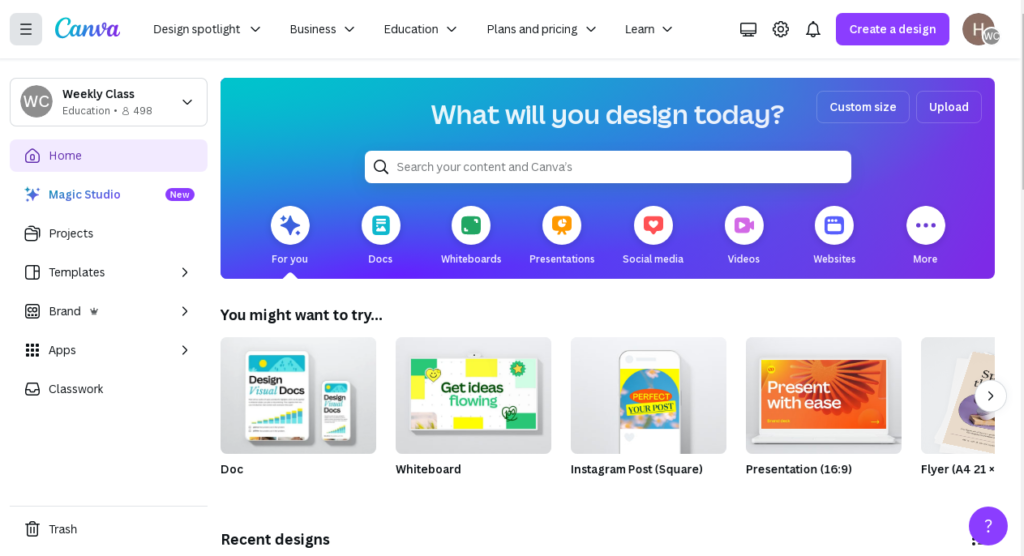
lead magnets even without a design background.
5. Promote Your Lead Magnet
Once your lead magnet is ready,
it’s time to promote it across various channels,
including your website, social media, email campaigns, and paid ads.
Ensure that your lead magnet is prominently displayed on high-traffic pages of your website,
such as your homepage or blog,
and use compelling CTAs (calls to action) to encourage visitors to download it.
Lead magnets are a critical component
of a successful lead generation strategy.
You can capture high-quality leads and nurture them
into customers by crafting valuable,
actionable, easy-to-consume offers that solve specific problems.
Whether you’re offering an ebook, template, or webinar,
the key is to ensure your lead magnet delivers immediate value
and aligns with the needs of your audience.
As you move forward with creating and optimizing your lead magnets,
you’ll find that they can significantly boost your lead-generation efforts
and drive growth for your business.
Mastering the Art of Landing Pages
Landing pages are crucial components of any successful lead-generation strategy.
A well-designed landing page can be the perfect entry point for potential leads,
guiding them through a seamless process toward becoming customers.
This chapter will explore what makes an effective landing page,
how to optimize its elements
and the best practices that can significantly increase conversion rates.
What is a Landing Page?
A landing page is a standalone web page
created specifically for marketing or advertising purposes.
Its main goal is to capture leads by offering something of value,
such as a lead magnet or a special offer,
in exchange for contact information.
Unlike other pages on a website,
a landing page focuses on a single call to action (CTA),
eliminating distractions and providing a streamlined user experience.
The Purpose of a Landing Page
A landing page serves as a focused space where you can direct your visitors from ads,
email campaigns, or social media promotions.
Its purpose is to capture their attention and encourage them to take the desired action,
whether that’s signing up for a newsletter,
downloading a resource, or registering for a webinar.
There are two primary types of landing pages:
Lead Generation Landing Pages:
These pages are designed to capture lead information,
typically through a form where visitors provide
their contact details in exchange for a valuable offer (such as an ebook or free trial).
Click-Through Landing Pages:
These pages act as a bridge between an ad or marketing campaign and
the next step in the buyer’s journey,
often leading directly to a product or service page.
The first type—Lead Generation Landing Pages—is the most relevant for lead generation purposes.
[convertkit form=7073012]
Critical Elements of a High-Converting Landing Page
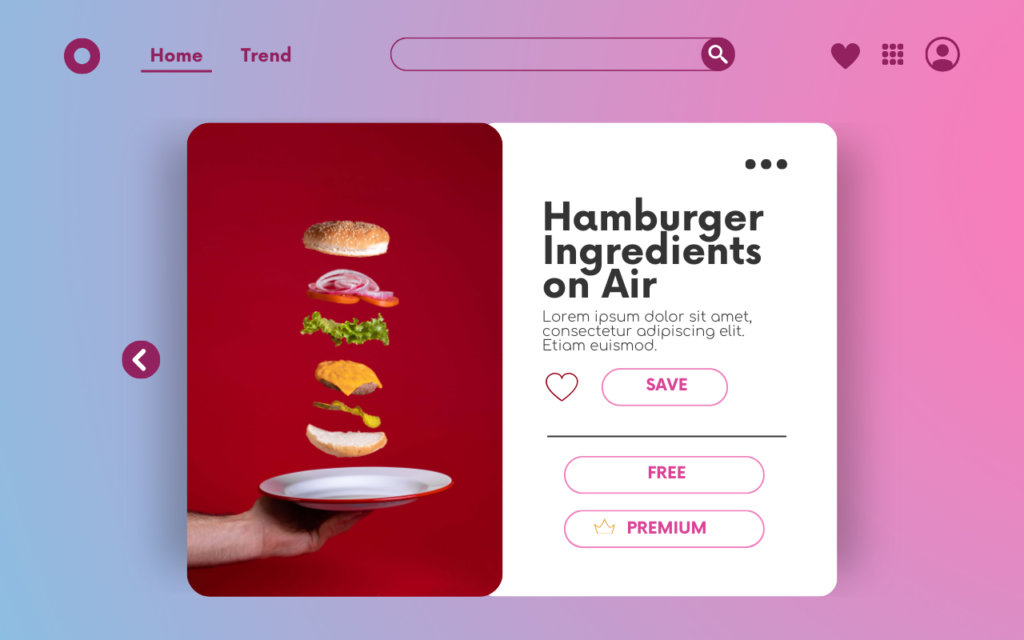
The effectiveness of your landing page depends on various factors,
including design, messaging, and user experience.
Let’s break down the critical elements of a high-converting landing page:
A Clear and Compelling Headline
The headline is the first thing visitors see when they land on your page,
so it needs to capture their attention and communicate immediately
The value of your offer. A strong headline is:
Clear: It should clearly state what the user will gain from taking action on your page.
Benefit-Oriented: Focus on the benefit the visitor will receive,
not just the features of your product or service.
For example,
instead of “Download Our Marketing Guide,”
a more compelling headline could be “Get the Ultimate Marketing Guide to Boost Your Leads by 300%.”
Subheadline that Reinforces the Offer
The subheadline supports your main headline
by adding more context or emphasizing why your offer is valuable.
It should expand on the promise in the headline
and create a sense of urgency or exclusivity.
For instance, if the headline reads,
“Get the Ultimate Marketing Guide to Boost Your Leads by 300%,”
the subheadline could say,
“Unlock proven strategies top marketers use to double your conversion rates in 30 days.”
Visual Elements
The design and visuals of your landing page
play a significant role in capturing attention and building trust.
Ensure that your landing page has the following visual components:
High-Quality Images or Videos: Use relevant,
professional visuals that support your offer.
For example, a video explaining your product’s benefits
or a screenshot of a lead magnet (like an ebook) can help convey value.
Minimalist Design: Keep the design clean and uncluttered.
Avoid unnecessary distractions that might take
The visitor’s attention is away from the CTA.
Visual Hierarchy: Structure your landing page to guide the visitor’s eye toward the CTA naturally.
Use contrasting colours for your CTA button;
ensure essential information is above the fold.
Persuasive Copy
The copy on your landing page should speak directly to your audience’s pain points and offer a solution.
Compelling landing page copy is:
Benefit-Focused: Instead of talking about features,
focus on how your offer solves a problem or fulfils a need for the visitor.
Concise: Avoid lengthy paragraphs.
Use bullet points and short sentences to keep your messaging concise and easy to scan.
Action-Oriented: Use action verbs to encourage the user to take the next step.
For example, instead of saying,
“Our guide contains helpful tips,”
you could say,
“Download the guide to start generating more leads today.”
Strong Call to Action (CTA)
Your CTA is one of the most critical elements of your landing page.
It should tell the visitor what action to take and why they should take it.
A high-converting CTA is:
Visible: Use bold, contrasting colours that make the CTA stand out from the rest of the page.
Specific: Instead of generic CTAs like “Submit” or “Click Here,”
use particular instructions that highlight the value,
such as “Get Your Free Ebook” or “Start Your Free Trial.”
Above and Below the Fold: Place your CTA at the top and the bottom of
the page to make it easily accessible as visitors scroll.
Lead Capture Form
The form on your landing page captures your visitor’s contact information.
A few best practices for forms include:
Keep it Simple: Only ask for the information you need.
A long form with many fields can discourage users from completing it.
Don’t ask for a phone number or other details if you only need an email address.
Position Above the Fold: Make sure the form is visible without scrolling.
This increases the likelihood that visitors will fill it out.
Provide Value Next to the Form: Reinforce the value of your offer near the form.
For example, a small blurb like
“Enter your email for instant access to the Ultimate Marketing Guide.”
can motivate users to complete the form.
7. Social Proof and Trust Signals
Adding social proof, such as testimonials, reviews,
or trust badges can increase your landing page’s credibility and convince visitors to take action.
People are more likely to trust your offer if they see that others have benefited.
Testimonials: Include quotes from satisfied customers or clients who have used your product or service.
Case Studies: Showcase a short case study with metrics highlighting
the success others have achieved using your solution.
Trust Badges: Display any certifications, awards,
or security seals that reinforce trust in your business.
8. Mobile Optimization
Many of your visitors will access your landing page from a mobile device.
If your page isn’t optimized for mobile,
you risk losing potential leads.
Make sure your landing page is:
Mobile-Friendly: Ensure that your page loads quickly and displays correctly on all devices,
with responsive design elements that adjust
to different screen sizes.
Simplified for Mobile Users: Users have less patience for complex designs.
Keep the mobile version of your landing page clean
with large CTA buttons and easy-to-fill forms.
Best Practices for High-Converting Landing Pages
Now that we’ve covered the key elements of a landing page,
let’s look at some best practices
that can help you optimize your page for maximum conversions:
1. A/B Testing
A/B testing involves creating two versions of your landing page with slight variations (such as different headlines,
images, or CTA buttons) to see which performs better.
This lets you identify which elements drive
the most conversions and continually improve your page.
Test One Element at a Time: When A/B testing,
focus on one variable at a time,
such as the headline or button colour,
to see how each element impacts conversions.
Use Data-Driven Insights: Use tools like Google Optimize or Optimizely to run tests and track the results.
Make decisions based on the data, not just assumptions.
Speed Optimization
Page load time is critical to landing page performance.
If your page takes too long to load,
visitors will likely leave before seeing your offer.
A slow-loading page can significantly hurt your conversion rates.
Compress Images: Use optimized image formats and compress images to reduce load time.
Minimize Code: Use clean, efficient code to ensure your page loads quickly.
Use a CDN (Content Delivery Network): A CDN can distribute your landing page’s content across multiple servers,
improving load times for visitors worldwide.
[convertkit form=7073012]
3. Ensure Consistent Messaging
Your landing page should align with the messaging in your ads,
emails, or social media campaigns.
If the visitor clicks on an ad for “Free SEO Tips.”
but lands on a page promoting “Social Media Strategies,”
they will be confused and more likely to leave.
Ensure that your headlines, CTAs,
and visuals are consistent across all channels to create a seamless user experience.
4. Use Exit-Intent Popups

Exit-intent popups appear when a visitor is about to leave your landing page.
They offer a last-chance opportunity to capture
the visitor’s contact information before they exit.
For example, you could provide an additional incentive
Such as a discount or bonus resource in the popup.
5. Limit Navigation and Distractions
A landing page’s purpose is to convert visitors,
so it’s essential to eliminate any distractions. This means:
Removing Navigation Menus: Unlike other web pages,
landing pages should have minimal navigation
to keep the user focused on the main action (filling out the form or clicking the CTA).
Avoid External Links: Don’t link to other pages or external sites.
This will only distract users and reduce your chances of conversion.
High-converting landing page
is a powerful tool in your lead generation toolkit.
By focusing on clear messaging, persuasive design,
and user experience optimization,
you can create landing pages that turn visitors into leads and, ultimately,
paying customers. Whether you’re offering a lead magnet,
promoting a special offer, or driving webinar sign-ups,
mastering the art of landing pages is essential to growing your business
Building an Effective Lead Nurturing Strategy
Lead nurturing is developing relationships
with potential customers at every sales funnel stage. It’s a vital
component of the lead generation process
because not all leads are ready to convert immediately.
A well-designed lead nurturing strategy helps you stay on top of mind
with prospects and guide them through the buyer’s journey
until they’re prepared to make a purchase.
In this chapter, we’ll explore the critical components of a lead nurturing strategy,
the role of automation,
and best practices for building long-term relationships with your leads.
What is Lead Nurturing?
Lead nurturing is engaging
with leads through personalized and targeted communication,
intending to move them closer to a purchasing decision.
It involves content, messaging,
and follow-up strategies that address the lead’s specific needs and pain points.
By nurturing leads, businesses can build trust,
provide value, and position themselves as the go-to solution
when the lead is ready to make a decision.
While lead nurturing can involve many touchpoints,
such as email, social media, and direct communication,
its purpose remains the same:
To build relationships and gradually convert leads into paying customers.
The Importance of Lead Nurturing
Many businesses focus heavily on generating leads
but often neglect to nurture them after the initial contact.
This is a mistake because most leads won’t be ready to buy immediately.
Research shows that nearly 80% of new leads
never convert into sales due to ineffective lead nurturing.
Lead nurturing helps bridge this gap by:
Building Trust: You build credibility and trust with your leads
by providing valuable, relevant content.
This increases the likelihood that they will choose your business when
they’re ready to purchase.
Guiding the Buyer’s Journey: Lead nurturing allows you to guide leads
through the different stages of the buyer’s journey
by offering tailored content matching their interest stage.
For example, a lead in the awareness stage may need educational content,
while a lead in the decision stage may require a product demo or case study.
Staying Top of Mind: Regular communication helps ensure
your brand remains top of mind.
Even if a lead isn’t ready to convert immediately,
staying in touch keeps you in the conversation when they are prepared to buy.
Boosting Conversion Rates: Businesses that effectively nurture their leads see higher conversion rates.
A well-executed lead nurturing strategy ensures that leads
are more qualified when they reach the sales team,
resulting in a higher likelihood of closing the sale.
Critical Components of an Effective Lead Nurturing Strategy
An effective lead nurturing strategy combines timely
and relevant communication with automation and personalization.
Let’s look at the essential components of a successful strategy:
Segmentation
Segmentation involves dividing your leads into different groups based on shared characteristics,
such as behaviour,
demographics,
or stage in the sales funnel.
This allows you to tailor your messaging
and content to each segment’s specific needs.
For example, you might segment your leads based on:
Lead Source: Leads from social media may have different interests
or needs compared to leads from paid search or email campaigns.
Stage in the Buyer’s Journey: A lead who has downloaded an ebook
maybe in the awareness stage,
while a lead who has requested a demo might be further along in
the decision-making process.
Industry or Business Size: For B2B companies,
segmenting leads by industry or business size
can help you create more relevant content.
A small startup will have different needs than a large enterprise.
2. Personalization
Personalization is critical to effective lead nurturing.
People are more likely to engage with content
That feels relevant and tailored to their interests.
With the correct data, you can personalize your emails,
Offers and messaging to create a more meaningful connection with your leads.
[convertkit form=6831055]
Ways to personalize lead nurturing include:
Using the Lead’s Name: Including the lead’s name in
the subject line or email greeting helps create a personal touch.
Behaviour-Based Personalization: Personalize communication based on your leads’ actions.
For example, if a lead downloads an SEO guide,
you can send them related content,
such as an article on keyword research.
Tailored Offers: If you know a lead has been browsing a particular product or service,
you can send them a personalized offer,
such as a discount or free trial related to that product.
3. Automated Email Sequences
Email remains one of the most effective channels for lead nurturing.
Automated email sequences allow you to send a series of emails to leads over time,
helping you stay in touch and nurture them through the buyer’s journey.
Types of automated email sequences include:
Welcome Series: Send welcome emails when a new lead subscribes to your list.
These emails can introduce your brand,
set expectations, and provide helpful resources.
Educational Series: Provide valuable content that educates your leads about your industry, products,
or services. For example,
you could send emails that break down the critical components of your lead generation toolkit.
Product Nurture Series: For leads who have shown interest in a specific product,
send emails that highlight the product’s features,
benefits, and case studies.
This keeps the lead engaged and moves them closer to a purchase decision.
Re-engagement Series: For leads who have gone cold or haven’t interacted
with your content in a while,
send a re-engagement series to reignite their interest.
You might offer a particular discount or highlight new features or services.
4. Content Marketing
Content is the fuel that drives lead nurturing.
By providing valuable, relevant content,
you can engage your leads, answer their questions,
and address their pain points.
The key is to deliver the right content at the right time.
Here are some types of content you can use in your lead nurturing strategy:
Educational Blog Posts: Create posts
that address common challenges or questions your audience faces.
For example, a post on “Top 10 Lead Generation Mistakes and How to Avoid Them..”
can be helpful for leads in the awareness stage.
Case Studies: With detailed case studies, showcase success stories from your customers.
This type of content is particularly effective for leads
in the decision stage who are looking for proof
that your product or service delivers results.
Ebooks and Whitepapers: Offer in-depth, long-form content about a specific topic or solution.
Ebooks and whitepapers are great for leads who
They seek comprehensive information before making a decision.
Webinars and Videos: Engage your audience with webinars and video content.
Webinars allow you to showcase your expertise in real time,
while videos can be used to explain complex concepts
or demonstrate how your product works.
5. Multi-Channel Approach
While email is a decisive lead-nurturing tool,
it shouldn’t be your only channel.
A multi-channel approach helps you reach your leads where they are,
increasing the chances of engagement.
Consider incorporating the following channels into your lead nurturing strategy:
Social Media: Use platforms like LinkedIn,
Twitter and Facebook to share valuable content and stay connected with your leads.
You can also use retargeting ads
to reach leads who have visited your website but haven’t converted.
SMS: Send personalized SMS messages for time-sensitive offers or essential updates.
For example, you might send a reminder about an upcoming webinar
or an exclusive discount code.
Direct Mail: In some industries, direct mail can be an effective way to nurture leads,
especially for high-value prospects.
A personalized letter or gift can create a memorable touchpoint and build rapport.
The Role of Automation in Lead Nurturing
Automation is a game-changer for lead nurturing.
By automating repetitive tasks,
you can scale your lead nurturing efforts and ensure
that every lead receives timely, relevant communication.
Here are some ways to leverage automation:
Drip Campaigns: Set up automated email drip campaigns
that send pre-written emails to leads based on their actions or behaviour.
For example, if a lead downloads an ebook,
you can automatically enrol them in a drip campaign
that sends related content over the next few weeks.
Lead Scoring: Use lead scoring to prioritize your efforts and focus on the most engaged leads.
Lead scoring assigns points to leads based on their behaviour,
such as opening emails, visiting your website, or downloading resources.
When a lead reaches a specific score,
it can be automatically passed to the sales team.
CRM Integration: Integrate your lead nurturing efforts with your CRM
(Customer Relationship Management) system.
This allows you to track and manage leads more effectively,
ensuring that no lead falls through the cracks.
Best Practices for Lead Nurturing
To ensure your lead nurturing strategy is as effective as possible,
keep the following best practices in mind:
1. Be Consistent but Not Overbearing
Consistency is vital when nurturing leads,
but there’s a fine line between staying in touch and overwhelming your audience.
Avoid bombarding leads with too many emails or promotions.
Instead, space out your communication to provide value over time.
2. Focus on Adding Value
Every interaction with a lead should add value.
Whether it’s an email, social media post,
or SMS message, ensure that your content addresses their needs,
answers their questions, or solves a problem.
3. Measure and Optimize
Continuously measure the performance of your lead nurturing campaigns.
Track metrics such as open, click-through,
and conversion rates to understand what’s working and where you can improve.
Use A/B testing to experiment with different subject lines,
content formats, and CTAs.
4. Stay Aligned With Sales
Effective lead nurturing requires close alignment between marketing and sales.
Ensure that both teams are working together
to define what constitutes a qualified lead
and when leads should be passed to the sales team.
By building a thoughtful and well-structured lead nurturing strategy,
you can cultivate stronger relationships with your leads,
guide them through the buying process,
and ultimately increase your conversion rates.
[convertkit form=6831055]
Mastering the Art of Lead Scoring and Qualification
Lead scoring and qualification are essential components
of an efficient lead generation system.
They enable you to prioritize leads,
focus on the most promising prospects,
and optimize the sales process.
Without these systems in place,
you risk spending time and resources on leads
that are unlikely to convert while ignoring those
who are ready to make a purchasing decision.
In this chapter, we will delve into the intricacies of lead scoring,
explore how to qualify leads effectively,
and examine best practices to ensure you are targeting
the right prospects with the right approach.
What is Lead Scoring?
Lead scoring is a system that assigns a numerical value (or score) to each lead based on specific actions they take,
their demographics, and their level of engagement with your brand.
This score helps sales and marketing teams identify
which leads are more likely to convert,
allowing them to prioritize their efforts accordingly.
Each lead action—opening an email,
visiting a landing page, or downloading a whitepaper—adds or subtracts from the lead’s score.
The goal is to create a clear picture of how engaged a lead is
and how far along they are in the buyer’s journey.
Why is Lead Scoring Important?
Lead scoring is critical for several reasons:
Prioritizing Sales Efforts: Not all leads are created equal.
Some are ready to buy,
while others are just beginning to explore their options.
Lead scoring helps sales teams focus on high-priority leads more likely to convert,
ensuring that time and resources are allocated efficiently.
Aligning Marketing and Sales: By establishing a transparent scoring system,
marketing and sales teams can work together to define a qualified lead.
This alignment helps create a seamless transition between
the two teams and ensures that leads
are nurtured adequately throughout the buyer’s journey.
Improving Conversion Rates: A well-structured lead scoring system helps you identify the most engaged and interested prospects.
By focusing your efforts on these leads,
You can improve your conversion rates and shorten the sales cycle.
Streamlining Communication: Lead scoring allows you to segment your leads based on their score,
enabling you to send targeted messages that are more relevant to their level of engagement.
For example, a lead with a high score may receive a product demo invitation,
while a lower-scoring lead may receive educational content to nurture their interest.
How to Create a Lead Scoring System
A successful lead scoring system combines both demographic and behavioural factors.
By analyzing these factors, you can create a score
that accurately reflects a lead’s potential to convert.
Here’s how to create a lead-scoring system:
1. Define Your Ideal Customer Profile (ICP)
The first step in building a lead-scoring system is
to define your Ideal Customer Profile (ICP).
Your ICP describes
the customer who will most likely benefit from your product or service.
This profile includes demographic information,
such as job title, company size, industry, and geographic location.
Once you’ve defined your ICP,
you can assign higher scores to leads that match this profile.
For example, if your ICP is a small business owner in the tech industry,
leads that fit this description would receive a higher score than those who do not.
2. Analyze Behavioral Triggers
Behavioral triggers are actions that indicate a lead’s level of engagement
with your brand. These can include:
Visiting Key Pages: Leads who visit essential pages on your website,
such as pricing pages or product pages,
are likely more interested in your offerings and should receive a higher score.
Email Engagement: Leads who open and click through
your emails demonstrate interest and engagement,
which can boost their score.
You can also track how many emails they’ve interacted
with and assign points accordingly.
Content Downloads: Downloading valuable resources,
such as ebooks or whitepapers,
shows that a lead actively seeks information about your product or industry.
This behaviour is typically a strong indicator of interest.
Attending Webinars or Demos: Leads who register for or attend webinars
or product demos are highly engaged and closer to making a decision,
warranting a higher score.
3. Assign Scores to Actions
Once you’ve identified the key demographic and behavioural factors,
assign scores to each based on their importance. For example:
Job Title: +10 points if the lead’s job title matches your ICP.
Company Size: +5 points if the company size aligns with your ICP.
Visiting the Pricing Page: +15 points if the lead visits your page, indicating strong interest.
Opening an Email: +2 points for each email the lead opens.
Attending a Webinar: +20 points if the lead attends a webinar,
showing high engagement.
It’s essential to tailor the scoring system to your specific business goals
and buyer’s journey.
Depending on how your target audience behaves,
some actions will carry more weight than others.
4. Set a Threshold for Qualified Leads
After you’ve created your scoring system,
establish a threshold that determines when a lead becomes “sales-qualified.”
A sales-qualified lead (SQL)
is one that is ready to be passed from the marketing team to
the sales team for further follow-up.
For example, you might set the threshold at 50 points.
Once a lead reaches or exceeds 50 points,
they are deemed qualified and ready for a sales conversation.
Leads with lower scores can remain in
the nurturing stage until their scores increase.
5. Regularly Review and Adjust the Scoring System
Lead scoring is not a one-time task.
It’s essential to regularly review your scoring system to ensure it’s still accurate and effective.
As your business evolves and you gain more insights into lead behaviour,
you may need to adjust
the weight of specific actions or add new scoring criteria.
Lead Qualification: Separating the Wheat from the Chaff
Lead qualification is the process of determining
which leads are most likely to become customers.
While lead scoring helps with this process,
it’s equally important to have a structured approach to qualify leads based on specific criteria.
This ensures that your sales team focuses on leads with the highest potential.
The Difference Between Marketing-Qualified and Sales-Qualified Leads
There are two primary types of qualified leads:
Marketing-Qualified Leads (MQLs): These leads have shown interest in your marketing efforts,
such as downloading content or subscribing to your newsletter.
While engaged,
they may not yet be ready for a sales conversation.
Sales-Qualified Leads (SQLs): These leads have progressed further
in the buyer’s journey and are prepared to speak with a sales representative.
SQLs typically have higher engagement levels
and are actively seeking a solution.
Critical Criteria for Lead Qualification
To effectively qualify leads, you need to consider the following criteria:
Budget: Does the lead have the financial capacity to purchase your product or service?
This is a critical factor in determining whether
they are a viable customer.
Authority: Is the lead the decision-maker,
or do they have the authority to influence purchasing decisions?
If not, you may need to focus on building relationships
with other organisational stakeholders.
Need: Does the lead genuinely need your product or service?
Understanding their pain points and challenges can help you assess
whether your offering fits well.
Timeline: What is the lead’s timeline for making a purchase?
A lead who needs a solution immediately is more urgent
than one who is still exploring options for the future.
Using BANT for Lead Qualification
The BANT framework is a popular method for qualifying leads. BANT stands for:
Budget: Does the lead have the budget to make a purchase?
Authority: Is the lead the decision-maker, or do they influence the buying process?
Need: Does the lead require your product or service?
Timing: What is the lead’s timeline for making a decision?
By using the BANT framework,
you can quickly assess whether a lead is worth pursuing
Or if it needs further nurturing before being handed off to the sales team.
Best Practices for Lead Scoring and Qualification
To maximize the effectiveness of your lead scoring and qualification efforts,
follow these best practices:
1. Align Sales and Marketing
For lead scoring and qualification to work,
marketing and sales teams must be aligned on what constitutes a qualified lead.
Regular communication between both teams
ensures everyone is on the same page and leads are passed along at the right time.
2. Leverage Data for Decision-Making
Data is the backbone of lead scoring and qualification.
Use data from your CRM, marketing automation platform,
and analytics tools to track lead behaviour and engagement.
This data-driven approach helps you make informed decisions
about which leads to prioritize.
3. Regularly Review and Update Your Criteria
The lead scoring and qualification process
It would be best if you evolved as your business grows and gain more insights into your target audience.
Periodically review your scoring system
and qualification criteria to ensure they are still relevant and practical.
4. Focus on Quality, Not Quantity
It’s easy to get caught up in generating as many leads as possible,
but quality should always take precedence over quantity.
Focus on generating high-quality leads that are more likely
to convert rather than wasting resources on unqualified prospects.
5. Nurture Unqualified Leads
Just because a lead isn’t ready to buy now doesn’t mean
they won’t be in the future.
Continue to nurture unqualified leads through targeted email campaigns
and content marketing to keep them engaged
until they are ready to move forward.
Mastering the art of lead scoring and qualification
is vital to optimizing your lead generation efforts.
By focusing on suitable leads and implementing a transparent,
data-driven scoring system,
you can maximize your chances of converting leads into customers.
[convertkit form=6831055]
Optimizing Conversion Rates with Landing Pages and Forms
Landing pages and forms are pivotal elements in your lead generation strategy.
They serve as the gateway between attracting visitors
and converting them into valuable leads.
In this chapter, we’ll explore how to create high-converting landing pages,
optimize your forms for lead capture,
and leverage A/B testing to fine-tune your conversion rates.
The Role of Landing Pages in Lead Generation
A landing page is a standalone web page that encourages visitors to take a particular action.
Whether downloading an ebook,
signing up for a webinar, or requesting a demo,
landing pages are built with conversion as the primary objective.
Unlike your homepage or other generic web pages,
a landing page focuses on a single call-to-action (CTA)
and eliminates distractions.
Their simplicity and purpose-driven nature make them highly effective at driving conversions.
Why Landing Pages Matter
Focused Attention: Landing pages are designed to remove distractions,
such as navigation menus and multiple links,
allowing visitors to focus solely on your offer.
Targeted Messaging: Landing pages can be tailored to match the visitor’s needs and intent.
For example, suppose a visitor arrives on your page from an ad promoting a free ebook. In that case,
the landing page should highlight the benefits of downloading that ebook,
creating a seamless experience.
Improved Conversion Rates: A well-optimized landing page is laser-focused on a single action,
making it more likely that visitors will complete the desired action,
such as filling out a form or clicking a CTA button.
Data Collection: By embedding forms on your landing pages,
you can collect essential information from leads,
such as their name, email address, job title, and more.
This data can then be used for further lead nurturing and scoring.
Critical Elements of a High-Converting Landing Page
To create a high-converting landing page,
you need to ensure it includes certain
key elements that guide visitors toward taking the desired action.
Here are the most critical components to focus on:
1. A Clear and Compelling Headline
Your headline is the first thing visitors will see when they land on your page,
and it must capture their attention immediately.
It should convey the value of your offer and set the tone for the rest of the page.
For example, if your offer is a free lead generation ebook,
a headline like “Unlock the Secrets to Lead Generation Success.”
would be both attention-grabbing and value-driven.
2. A Persuasive Subheadline
While the headline hooks your audience,
the subheadline provides more context and supports the main message.
It should reinforce the value of your offer and explain why the visitor should care.
For instance,
the subheadline could say,
“Download our comprehensive guide to mastering lead generation and start growing your business today.”
3. Strong Visuals
Images, videos, and other visuals can significantly enhance your landing page
by making it more engaging and helping visitors visualize the benefits of your offer.
For example, if you’re offering a downloadable guide,
you could include an image of the ebook cover or a screenshot of a page inside.
For product demos or software trials,
embedding a short video that demonstrates
the product in action can be compelling.
4. Concise and Value-Oriented Copy
The copy on your landing page should be concise,
easy to read, and focused on the benefits of your offer.
Avoid lengthy paragraphs and instead
use bullet points to highlight the key advantages.
For example, if you’re offering a free trial of your software,
the copy should focus on how the software will solve your visitor’s pain points,
improve their workflow, or save them time and money.
5. A Single Call-to-Action (CTA)
Your landing page should have one clear and prominent CTA.
Whether it’s “Download Now,” “Get Started,” or “Sign Up,”
The CTA should be action-oriented and make what the visitor needs to do next obvious.
Avoid having multiple CTAs on the same page,
as this can confuse visitors and reduce your chances of converting them.
Keep the focus on one action per page.
6. Minimal Distractions
Landing pages should be free from unnecessary elements that could divert the visitor’s attention from the CTA.
This means removing navigation menus, sidebars,
and extra links unrelated to the offer.
By minimizing distractions,
you help keep the visitor focused on completing the action you want them to take.
7. Social Proof
Including social proof, such as testimonials,

case studies, or trust badges,
can help build credibility and convince visitors that your offer is worthwhile.
People are more likely to take action if
they see that others have had a positive experience with your brand.
For example, if you’re offering a webinar on lead generation strategies,
you could include a testimonial from a past attendee
who found the content valuable and implemented the strategy successfully.
8. Optimized Forms for Lead Capture
The form is arguably the most important element
of your landing page since it’s where you collect lead information.
However, asking for too much information upfront can deter visitors from filling it out.
To maximize conversions,
keep your forms short and only ask for the information you truly need.
For example, if you’re offering a downloadable guide,
asking for a name and email address may be sufficient.
You can also use progressive profiling,
a technique where you ask for additional information over time as leads engage with your content.
This way, you don’t overwhelm them with a long-form on the first interaction.
Optimizing Your Forms for Maximum Conversions
Form optimization is a critical aspect of lead generation.
Even a minor tweak to your form design,
fields, or placement can significantly impact your conversion rates.
Here are some tips for optimizing your forms:
1. Limit the Number of Fields
The more fields you have in your form,
the more friction you create for your visitors.
While it might be tempting to ask for detailed information upfront,
it’s best to stick to the essentials.
For example, if your goal is to generate email leads,
asking for a name and email address is often enough.
Once the lead becomes more engaged with your content,
you can collect additional information, such as their job title,
company name or phone number through progressive profiling.
2. Use Clear and Descriptive Labels
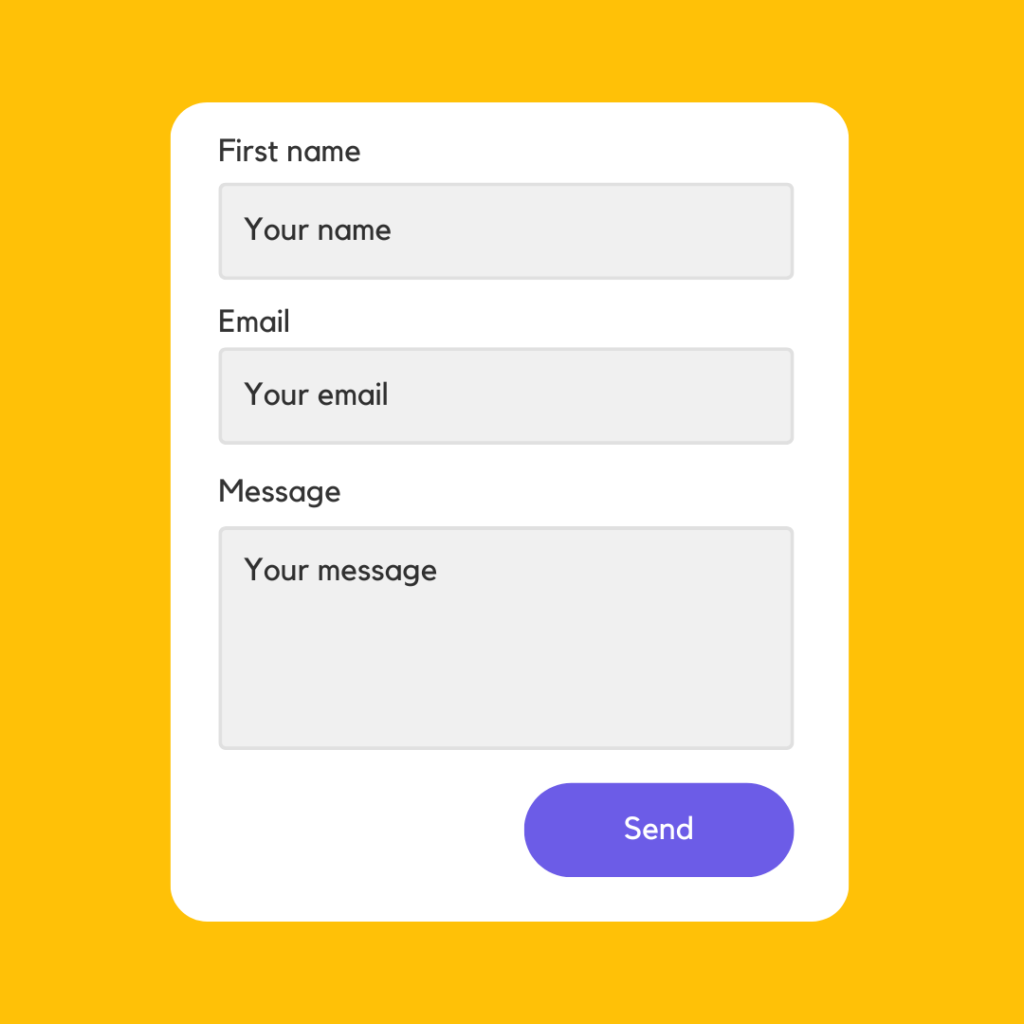
Make sure each field in your form has a clear and descriptive label
so visitors know exactly what information they need to provide.
For example, instead of labelling a field “Name,” use “First Name” and “Last Name” to avoid confusion.
Also, consider adding helper text or placeholder text
that provides further guidance. For instance,
under an email field, you could include a note that says,
“We’ll never share your email address with third parties.”
3. Optimize for Mobile Users
With more people accessing websites on mobile devices,
it’s crucial to ensure that your forms are mobile-friendly.
This means using responsive design so your form adjusts
to different screen sizes and remains accessible to fill out on mobile.
Avoid small form fields that are difficult to click on with a touch screen,
and ensure that the form’s CTA button is large enough to tap quickly.
4. Use Inline Validation
Inline validation provides real-time feedback as users fill out the form,
helping them correct mistakes immediately rather than waiting until they hit the submit button.
This reduces friction and improves the overall user experience.
For example, if a user enters an invalid email address,
you can display an error message next to the email field,
prompting them to correct it before they proceed.
5. Experiment with Button Text and Colors
The text on your form’s CTA button can significantly impact your conversion rates.
Instead of using generic phrases like
“Submit” uses action-oriented language that highlights the value of your offer,
such as “Download Now” or “Get My Free Guide.”
Additionally, the colour of your CTA button should stand out from the rest of the page,
drawing the visitor’s attention.
A/B testing different button colours and text can help you
determine what works best for your audience.
Using A/B Testing to Improve Conversion Rates
A/B testing is one of the most effective ways to optimize your landing pages and forms for higher conversion rates.
This process involves creating two versions of a page or form (version A and version B)
and testing them against each other to see which one performs better.
Here’s how to run successful A/B tests for your landing pages and forms:
1. Test One Variable at a Time
To get accurate results,
focus on testing one variable at a time.
This could be the headline, the CTA button colour,
the form length, or the placement of social proof.
By isolating a single variable,
you can see which change had the most significant impact on conversions.
2. Use a Sizable Sample
For your A/B test to yield meaningful results,
you need a large enough sample size.
If you only test on a handful of visitors,
the results may be skewed or inconclusive.
The more traffic you have,
the faster you’ll be able to gather sufficient data to make a decision.
3. Measure Key Metrics
When running an A/B test,
Focus on the key metrics that matter most to your lead generation goals.
These might include:
Conversion Rate: The percentage of visitors who complete the desired action,
such as filling out a form or clicking the CTA.
Bounce Rate: The percentage of visitors who leave the landing page without taking any action.
Time on Page: How long visitors stay on the page before converting or bouncing.
By tracking these metrics,
you can determine which version of your landing page or form performs better
and implement the winning changes across your entire site
Leveraging Analytics and Metrics to Refine Your Lead Generation Strategy
Analytics and metrics are the backbone of a successful lead-generation strategy.
They provide valuable insights into how well your campaigns are performing,
Identify areas for improvement,
and help you make data-driven decisions.
In this final chapter,
we will explore leveraging analytics and metrics effectively to refine your lead generation efforts, improve ROI,
and achieve your business goals.
Understanding Key Metrics in Lead Generation
To measure the success of your lead generation strategy,
it’s crucial to track and analyze the right metrics.
Each metric provides a piece of the puzzle,
helping you understand how well your campaigns perform and where you can make adjustments.
1. Conversion Rate
The conversion rate measures the percentage of visitors who complete the desired action,
such as filling out a form or clicking a CTA button.
It’s a key indicator of how effective your landing pages are,
forms and overall lead generation efforts.
Formula: Conversion Rate = (Number of Conversions / Total Number of Visitors) × 100
Why It Matters: A high conversion rate indicates
that your landing pages and offers are resonating with your audience.
A low conversion rate suggests that there may be issues with your messaging,
design, or targeting that needs to be addressed.
2. Cost Per Lead (CPL)
Cost Per Lead (CPL) measures the money you spend to acquire a single lead.
It’s essential for understanding the efficiency of your lead generation campaigns
and determining your return on investment (ROI).
Formula: CPL = Total Cost of Campaign / Number of Leads Generated
Why It Matters: Monitoring CPL helps you assess the cost-effectiveness of your lead generation efforts.
By comparing CPL across different channels and campaigns,
you can identify which sources deliver
the best value and adjust your budget accordingly.
3. Lead-to-Customer Conversion Rate
The Lead-to-Customer Conversion Rate tracks the percentage of leads who eventually become paying customers.
This metric provides insight into the quality of your leads and the effectiveness of your sales process.
Formula: Lead-to-Customer Conversion Rate = (Number of Customers / Number of Leads) × 100
Why It Matters: A high Lead-to-Customer Conversion Rate indicates
that your leads are well-targeted and your sales team effectively closes deals.
A low rate suggests there may be lead quality issues or
the sales process that need to be addressed.
4. Lead Source Performance
Tracking the performance of different lead sources
helps you understand which channels are generating the most valuable leads.
This can include organic search, paid ads,
social media, email marketing, and more.
Why It Matters: By analyzing lead source performance,
you can allocate your marketing budget more effectively
and focus on the channels that deliver the highest quality leads.
5. Engagement Metrics
Engagement metrics, such as email open rates,
click-through rates, and time spent on a page,
provide insights into how well your content and offers resonate with your audience.
These metrics help you gauge interest and refine your messaging.
Why It Matters: High engagement indicates your content is valuable and relevant to your audience.
Low engagement suggests that you may need to adjust your approach
to align with your target audience’s needs and interests.
Using Analytics to Optimize Lead Generation Campaigns
Once you have a clear understanding of the key metrics,
you can use analytics to optimize your lead generation campaigns
and improve overall performance.
1. Analyze Data Regularly
Regularly reviewing your analytics data allows you to identify trends,
track progress, and make informed decisions.
Set up a routine for analyzing your metrics,
such as weekly or monthly reports to stay on top of your campaign performance.
2. Identify Patterns and Trends
Look for patterns and trends in your data to gain insights into what’s working and what’s not.
For example,
if you notice that leads from a particular source have a higher conversion rate,
consider investing more in that channel.
3. A/B Test and Iterate
Use A/B testing to experiment with different variations of your landing pages,
forms, and offers.
By testing different elements and analyzing the results,
you can determine which approaches yield the best results and make data-driven adjustments.
4. Segment Your Data
Segment your data by different criteria, such as lead source,
demographics, or behaviour, to gain deeper insights into your audience.
This allows you to tailor your lead-generation efforts to specific segments
and optimize your campaigns for better results.
5. Monitor ROI
Keep a close eye on your return on investment (ROI)
to ensure that your lead generation efforts are delivering the desired results.
Calculate ROI by comparing the revenue generated from leads to
the cost of your campaigns.
Formula: ROI = (Revenue from Leads – Cost of Campaign) / Cost of Campaign × 100
6. Use Marketing Automation Tools
Marketing automation tools can help you track and analyze lead generation metrics more efficiently.
These tools offer features such as automated reporting,
lead tracking, and performance analytics,
making managing and optimising your campaigns easier.
Leveraging Insights for Continuous Improvement
The ultimate goal of tracking and analyzing metrics is continuously improving your lead generation strategy.
Here’s how you can use the insights gained from your analytics to drive ongoing optimization:
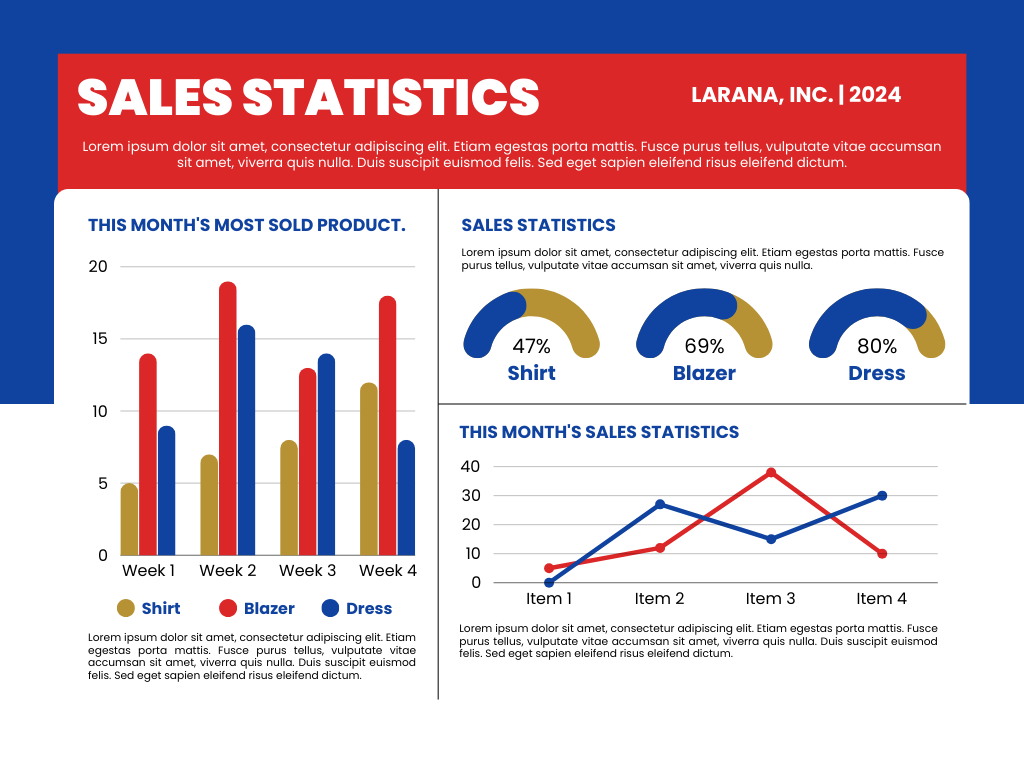
1. Refine Targeting and Segmentation
Use insights from your analytics to refine your targeting and segmentation strategies.
For example, if a specific demographic or behaviour results in higher conversion rates
focus on attracting more leads from that segment.
2. Enhance Content and Offers
Analyze engagement metrics to identify which types of content
and offers resonate most with your audience.
Use this information to create a more compelling
and relevant content that drives higher engagement and conversions.
3. Optimize Lead Nurturing
Review your lead nurturing metrics to identify areas for improvement.
For instance, if you notice that leads are dropping off during the nurturing process,
evaluate your email sequences and follow-up strategies to enhance their effectiveness.
4. Adjust Budget Allocation
Based on the performance of different lead sources and channels,
adjust your budget allocation to maximize ROI.
Invest more in high-performing channels and reduce spending on less effective ones.
5. Stay Agile and Adapt
The digital marketing landscape is constantly evolving,
and so are your leads’ preferences and behaviours.
Stay agile and be ready to adapt your strategies based on the latest data and trends.
Case Studies: Success Stories in Lead Generation Analytics
To illustrate the power of analytics in lead generation,
let’s explore a few case studies where businesses successfully leveraged data
to optimize their lead generation strategies:
Case Study 1: E-commerce Brand Boosts Conversion Rates
An e-commerce brand implemented A/B testing to optimize its landing page for a holiday promotion.
By testing different headlines,
CTAs and visual elements,
they identified a combination that increased their conversion rate by 25%.
This resulted in a significant boost in lead acquisition
and sales during the holiday season.
Case Study 2: B2B Company Improves Lead Quality
A B2B company used data analytics to analyze lead source performance
and found that leads from LinkedIn had a higher Lead-to-Customer Conversion Rate than other sources.
By reallocating their budget to focus on LinkedIn,
they improved lead quality and achieved a 30% increase in sales.
Case Study 3: SaaS Provider Enhances Lead Nurturing
A SaaS provider analyzed engagement metrics from
their email campaigns and discovered that leads were more likely
to convert when they received personalized content based on their behaviour.
By implementing dynamic content and tailored follow-ups,
they improved their lead nurturing effectiveness and increased their conversion rate by 20%.
By leveraging analytics and metrics,
you can gain valuable insights into your lead-generation efforts
and make informed decisions to optimize your strategy.
Regularly reviewing your data, testing different approaches,
and adapting based on your findings will help you achieve
better results and drive long-term success.
[convertkit form=6831055]
Conclusion
Congratulations on reaching the end of this comprehensive Lead Generation Toolkit!
You’ve journeyed through the essentials of crafting a powerful lead generation strategy,
from understanding your audience to optimizing your landing pages and leveraging data analytics.
As you implement the strategy and tactics outlined in this toolkit,
remember that successful lead generation is not a one-time effort but an ongoing process.
The landscape of digital marketing is constantly evolving,
as are your leads’ preferences and behaviours.
To stay ahead of the curve,
embrace a mindset of continuous improvement and adaptability.
Key Takeaways:
Know Your Audience: The foundation of any successful lead generation strategy
is a deep understanding of your target audience.
Tailor your messaging and offers to meet their specific needs and pain points.
Create Irresistible Offers: Craft compelling offers that provide real value to your leads.
Whether it’s an engaging ebook, a free trial,
or a valuable webinar,
ensure that your offer addresses the core needs of your audience.
Optimize Landing Pages and Forms: Design landing pages and forms with a single,
clear objective in mind.
Use persuasive copy, engaging visuals,
and minimal distractions to guide visitors smoothly toward conversion.
Leverage Analytics: Dive into your data to gain insights into what’s working and what’s not.
Regularly review critical metrics, conduct A/B testing,
and use analytics to refine and enhance your lead generation efforts.
Stay Agile and Adapt: The digital marketing world is dynamic and ever-changing.
Stay flexible and be prepared to adjust your strategies based on
the latest data and trends to ensure ongoing success.
Remember,
Lead generation’s ultimate goal is to attract leads and build meaningful relationships that drive long-term business growth.
By applying the principles and techniques from this toolkit,
you’ll be well-equipped to generate high-quality leads,
convert them into loyal customers, and achieve your business objectives.
Thank you for joining us on this journey.
Here’s to your success in mastering lead generation and unlocking new opportunities for your business!

